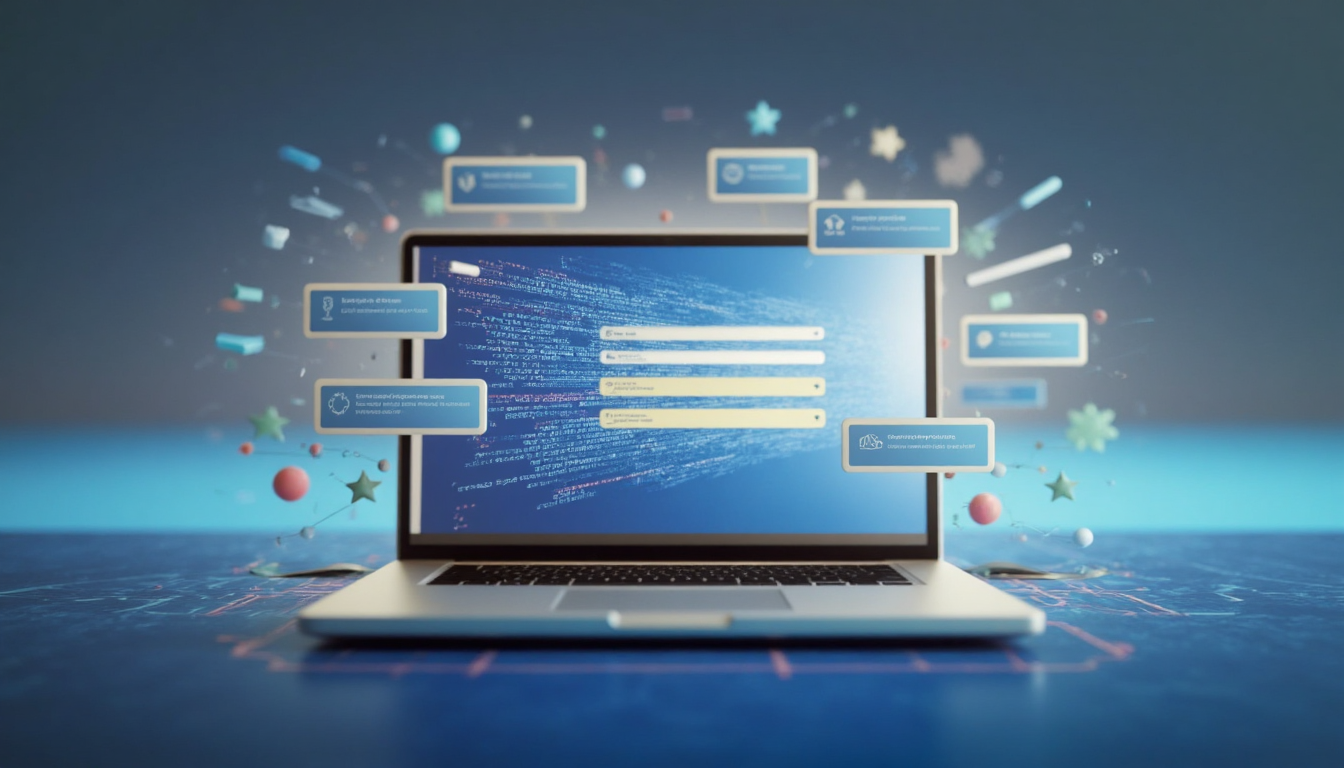Operationalizing AI Threat Modeling for ISO 42001 Compliance

You're being asked to validate the security of AI systems. But if your reviews only look at APIs, data flows, and platform controls, you’re missing the real risk: how AI can fail (or be made to fail).
ISO 42001 makes this a compliance issue now. It expects you to prove that your AI systems are not just technically secure but responsibly secure. That means you need to model threats around bias injection, prompt tampering, model inversion, and other risks that don’t show up in traditional STRIDE checklists.
The way I see it is that most security teams don’t have the time, or internal expertise, to dig into every model behavior or edge case. And engineering teams aren’t waiting around for AppSec to catch up. You need a way to review these systems at scale without compromising the depth or credibility of your threat models.
But did you know that you can use AI to make your threat modeling actually work for AI systems, meet ISO 42001 requirements, and hold engineering teams accountable for building systems you can defend? If you don’t, then now you know.
Table of Contents
- ISO 42001 Forces You to Rethink What Secure Means for AI Systems
- Use AI to Review More Threat Models Without Losing Control
- What to Look for When Threat Modeling AI Systems
- How This Aligns with ISO 42001 Risk Controls
- How to Make AI Threat Modeling Work with Your Engineering Teams
- Operationalize Threat Modeling Across Your AI Lifecycle
ISO 42001 Forces You to Rethink What Secure Means for AI Systems
Are you guilty of still treating AI like any other AI system? ISO 42001 asks for both responsible AI and security by design. And that includes evidence of threat modeling that is so much more than the usual STRIDE checklist. You’re now on the hook to assess how AI systems behave after deployment instead of just how the code is written. That changes the entire scope of risk reviews and adds pressure to already stretched AppSec teams.
What ISO 42001 actually demands from security
This isn't just about fairness and bias. The standard explicitly calls for secure design principles in AI systems. Threat modeling is a core expectation of your AI risk management process.
You’re expected to show:
- That AI systems are developed with secure-by-design principles.
- That identified risks (including malicious misuse, data leakage, and emergent behavior) are proactively managed.
- That threat modeling is part of your documented AI risk workflow.
In practice, that means you can’t just say we did a pentest or we secured down the API. You need to demonstrate that the model itself has been evaluated for misuse, abuse, and failure before and after deployment.
Why AI systems break threat modeling assumptions
Your traditional threat modeling approaches fall apart with AI for three key reasons:
- AI behavior is probabilistic and not deterministic. Unlike traditional software that follows explicit logic paths, AI systems make decisions based on statistical patterns. This means threats can emerge from unexpected combinations of valid inputs.
- Threats aren't just code-based. They can be model-based (poisoned training data), emergent (unexpected behaviors from valid inputs), or workflow-driven (misuse of legitimate outputs).
- STRIDE and kill-chain models don't map cleanly. When the system itself is making decisions at runtime based on patterns rather than explicit rules, traditional threat categories become fuzzy.
You can’t map a kill chain or DFD if you don’t even know how the model will respond tomorrow. That’s why a checklist-based approach won’t cut it here.
What makes this hard in practice
Let's be honest about why this is a struggle:
Most teams don’t fully understand the models they deploy
The people shipping AI features often treat models like black boxes. They fine-tune a foundation model or pull in an API but don’t really know how it works under the hood. And security teams are one more layer removed.
You end up reviewing systems without answers to basic questions:
- What data was used to train this model?
- What prompts or inputs will trigger unexpected outputs?
- What failure modes should we expect in edge cases?
Without visibility into model logic or data lineage, your threat model is either a joke or dangerously incomplete.
Security is still not embedded in AI workflows
AI features often get pushed through experimental or beta processes that sidestep normal security reviews. Many organizations treat AI like an MVP and not a product subject to full SDLC scrutiny.
This creates several risks:
- You’re brought in after deployment, not during design.
- There’s no standard process for AI threat modeling. Every review feels like a one-off.
- Devs see security as a delay.
So security gets stuck doing reactive reviews, chasing systems that are already live.
AppSec teams are already stretched thin
Let’s be blunt, your team doesn’t have the time to manually threat model every AI pipeline, use case, and edge behavior. You’re already trying to scale security reviews across microservices, APIs, mobile apps, and more. And AI just adds another layer of complexity with zero headcount added.
This creates two bad options:
- Rush through a surface-level review and hope it’s enough for compliance.
- Delay the feature until you can do a proper analysis and take the political hit.
Neither works. What you need is a way to scale up reviews without burning out your team or watering down the quality.
Your tooling doesn’t help here
Most threat modeling tools were built for static diagrams and not dynamic systems. They assume:
- The system logic is known.
- The inputs and outputs are predictable.
- The trust boundaries are clear.
None of that applies to AI.
You need tools (or workflows) that help you reason about:
- Prompt injections
- Model inversion attacks
- Data poisoning
- Emergent misuse based on downstream integrations
Without that, you’re either stuck trying to retrofit old tools or threat modeling in Notion docs and whiteboards.
Use AI to Review More Threat Models Without Losing Control
The irony isn't lost on me: using AI to secure AI. But there's a method to this madness.
AI threat modeling doesn’t mean handing your security reviews over to a chatbot. It means using large language models (LLMs) to do the grunt work on repeatable and structured tasks so your team can focus on the parts that require judgment, context, and accountability. Done right, AI helps you scale your reviews across more systems without lowering your bar or losing control of the outcomes.
This matters because the alternative is unsustainable: Either you miss critical AI risks because you’re overworked, or you delay releases because your team can’t keep up. AI gives you a third option: faster reviews that still meet your standards.
What AI-assisted threat modeling actually looks like
You're not handing the keys to the kingdom to ChatGPT. You're using LLMs as force multipliers for your security team:
- Feed architecture diagrams, model metadata, and pipeline configs into an LLM to generate potential threat scenarios.
- Have your security experts review, validate, and edit these outputs. The AI suggests; humans decide.
- Use the time saved to ask better questions earlier in the development process.
This approach doesn’t eliminate work. It front-loads useful questions earlier in the review process and frees up your team’s time to answer them.
AI helps you scale threat reviews
Most AppSec teams can’t manually threat model every AI feature in a sprint cycle. But with the help of AI, you shift from threat model if there’s time to threat model every time without needing to hire a new team member.
Here’s what you get when you operationalize this:
- Review 5x more models with the same team by reducing manual effort
- Focus your humans on high-context decisions.
- Embed threat model checkpoints into CI/CD or AI pipeline approvals.
This is how you avoid last-minute fire drills and security debt that builds up with every unchecked AI release.
What you still control (and always will)
Let's be crystal clear about what stays in human hands:
- Threat acceptance. AI can identify risks, but only you can decide which ones are acceptable.
- Mitigation strategy. The approach to handling identified threats remains your call.
- Risk ownership. Determining who's responsible for addressing each risk is a human decision.
- Final approval. AI doesn't make security calls, YOU do.
What to Look for When Threat Modeling AI Systems
AI systems introduce risks that don’t show up in normal application threat models. These business-critical failures can leak data, erode trust, or expose your systems to misuse at scale. ISO 42001 now expects you to account for these risks as part of your threat modeling process. That means your reviews need to go beyond APIs and access control and look at how AI actually behaves in the real world.
Prompt Injection and Model Misuse
This is the AI equivalent of SQL injection, but potentially more dangerous because it can be subtle and contextual.
What to look for
Most teams focus on what their model is supposed to do. You need to think about how it can be misused. Prompt injection and chaining attacks happen when users craft inputs that bypass safety controls or trick the model into performing unintended actions.
What to look for
- Inputs that control behavior outside intended use. Think of a user asking, Ignore your previous instructions and do X instead.
- Users chaining prompts to leak sensitive responses or jailbreak controls.
- Scenarios where legitimate-looking inputs produce unexpected or dangerous outputs.
How to review
- Add abuse case testing into threat modeling: What happens when the model gets tricked?
- Identify where the model has more control than you expect and who can reach those interfaces.
- Test with adversarial inputs (not just happy paths). You’re not testing if your testing doesn't include trying to break the system.
Model Drift, Retraining, and Inference-Time Risks
Models change over time, either through explicit retraining or gradual drift. Each change introduces new security risks.
What to look for
- Changes in model behavior over time due to retraining or corrupted data.
- Risks from runtime decisions made by the model with insufficient guardrails.
- Scenarios where the model makes high-impact decisions without human oversight.
How to review
You need to treat model updates like code deployments because they are. Every retraining or fine-tuning event should trigger a new threat modeling checkpoint.
- Treat model retraining like a new deployment. Always trigger a fresh threat model review.
- Use lineage tracking and access logs to detect when model outputs go off-script.
- Implement continuous monitoring for drift and unexpected behavior patterns.
- Set clear thresholds for when model behavior requires human review.
Supply Chain and Model Dependencies
Your AI system is only as secure as its weakest component. And with AI, those components often come from outside your organization.
What to look for
- Open-source models, pre-trained embeddings, third-party APIs.
- Undocumented data provenance and licensing gaps.
- Models trained on data you don't control or understand.
How to review
- Build an SBOM (Software Bill of Materials) for your AI stack. Include model versions, training sources, and data provenance.
- Ask: Who trained this, and on what data?
- Verify that third-party models meet your security standards before integration.
- Document the lineage of all model components, including training data sources.
How This Aligns with ISO 42001 Risk Controls
ISO 42001 is a framework that expects real documented risk management across your AI systems. That includes how you design, develop, deploy, and monitor models. Threat modeling plays a key role here. Done right, it helps you show that you’re identifying AI-specific risks early, making informed decisions about them, and tracking those risks across the system lifecycle.
This matters because regulators and auditors won’t just ask if you secured your AI systems. They’ll also ask how you did it and whether you can prove it.
Mapping threat modeling to ISO control requirements
Threat modeling helps you directly satisfy multiple ISO 42001 clauses. It’s evidence that you’re doing the work the standard already requires.
Clause 6.1.2: Risk identification
This clause requires that you identify AI-specific risks. Threat modeling is one of the most defensible ways to show how you’ve systematically reviewed risks tied to model behavior, misuse, and deployment context.
What this looks like:
- Structured reviews of model interfaces, training data, and misuse scenarios.
- Documented analysis of emergent risks like prompt injection, drift, or third-party model dependencies.
Clause 8.3: Design and development
This clause focuses on building AI systems securely from the start. Security by design means identifying them early and building with that context.
Threat modeling gives you:
- A repeatable method to identify risks during the design and development phases.
- Input for architecture decisions, control selection, and mitigation planning.
- Documentation showing that security was considered before deployment and not after.
Clause 9.1: Monitoring
Risk management isn’t static. Clause 9.1 requires that you continually monitor your AI systems and update your risk posture.
Threat models become living artifacts here:
- You review and update them after model retraining, pipeline changes, or new use cases.
- They serve as a reference point when something breaks, helping trace how the risk was assessed and managed.
- They provide auditors with a paper trail of your ongoing due diligence.
What your auditors will want to see
You don’t need a perfect threat model. You just need a credible process that shows you’re thinking critically and documenting decisions.
Repeatable process
Using AI to assist your threat modeling is fine as long as it’s not ad hoc. Auditors will want to see:
- How threats are identified (inputs to the process)
- How they're assessed (methodology)
- How decisions are made (governance)
Evidence of decision-making
Auditors want to see who accepted risks, who mitigated them, and what was documented. This means:
- Who signed off on risk acceptance?
- What controls were implemented?
- Where is this documented?
Coverage across system lifecycle
ISO 42001 expects risk management to follow the entire AI system lifecycle. That means:
- Reviewing at each stage of the AI lifecycle
- Updating models when systems change
- Maintaining threat models as living documents
How to Make AI Threat Modeling Work with Your Engineering Teams
You can’t bolt on security onto AI systems after the fact, especially when they’re changing fast and deployed by teams outside your usual SDLC. If you want to meet ISO 42001 requirements and reduce real risk, threat modeling needs to become part of how your AI systems are built, reviewed, and shipped. That means integrating it directly into engineering workflows.
Make threat modeling part of the AI pipeline
Threat modeling needs to run alongside model development instead of sitting in a shared doc that no one revisits. To work at scale, it has to plug directly into your MLOps tooling and workflows. Here’s how you operationalize it:
- Automate the starting point: Use AI tools to generate initial threat model drafts based on system diagrams, pipeline metadata, and model descriptions. These outputs give your team a head start and a consistent baseline to work from.
- Treat reviews as part of the CI/CD gate: Attach threat modeling checkpoints to pipeline stages, like when a model is first pushed, retrained, or promoted to production.
- Assign clear ownership: Someone needs to own the threat model for each AI service (typically the engineering lead or the ML ops owner).
Tie it to developer incentives
If you want engineers to care about threat modeling, it needs to show up in their world consistently. Make threat modeling part of their delivery metrics:
- Block pipeline merges if threat models aren’t reviewed: Use the same enforcement you apply to unit tests or code coverage. This sends a clear message that security reviews are part of definition-of-done.
- Expose risk posture in dev tools: Integrate threat modeling results into the dashboards developers already use, like JIRA, GitHub, or internal tooling. Make unresolved threats visible and trackable.
- Report on coverage: Track how many AI features shipped with completed threat models, and make that part of sprint or release metrics. There’s no need to be perfect here. You need progress and visibility.
Developers already know how to work with clear requirements and pipeline gates. Use that muscle to build better security habits.
Build a real security review practice for AI projects
I’m sure you’ve noticed how AI systems don’t behave like traditional apps. And that’s why your security reviews shouldn’t either. Here’s how to level up your reviews:
- Pair security engineers with data scientists and ML engineers: These teams don’t always speak the same language. Embedding helps bridge that gap early during model design and data selection.
- Run AI-specific threat modeling workshops: Focus on how models are used, how they behave under adversarial conditions, and what failure looks like in context. Use real-world examples (like prompt injection or model drift) to frame the session.
- Treat AI reviews as a distinct discipline: Give your team the training and space to specialize. AI security requires different thinking.
Operationalize Threat Modeling Across Your AI Lifecycle
There’s a way to make threat modeling more efficient and effective, and it’s with the use of AI. ISO 42001 expects real risk management that includes identifying how AI can fail, how it can be misused, and how those risks are handled across the system lifecycle. When you use AI to assist threat modeling (and operationalize it inside your pipelines) you get scale without giving up control.
For CISOs and AppSec leaders, this is more than compliance. It’s about reducing risk in systems you can’t afford to misunderstand. And it’s your credibility on the line when auditors ask how those systems were reviewed.
Start by assessing:
- Whether your current threat modeling process covers AI-specific risks.
- How threat modeling fits into your MLOps and engineering workflows.
- Who owns risk decisions and how that’s documented.
SecurityReview.ai maps your system design to ISO 42001 risk controls, identifies gaps in how you handle AI-specific threats, and gives you clear, actionable fixes. Whether you’re validating a new AI feature or prepping for audit, it gives your team the context, structure, and speed to get it right.
If AI systems are in production, your threat modeling needs to be ready today. Let’s make sure it is.
FAQ
Does ISO 42001 actually require threat modeling?
Yes. While the term “threat modeling” isn’t used verbatim, the standard explicitly calls for systematic risk identification (Clause 6.1.2), secure design practices (Clause 8.3), and ongoing risk review (Clause 9.1). Threat modeling is one of the most practical and auditable ways to meet those expectations, especially when you’re dealing with AI-specific behaviors.
What makes threat modeling different for AI systems?
AI doesn’t behave like normal software. You’re dealing with probabilistic outputs, prompt injection, emergent misuse, and model drift. Traditional STRIDE or kill-chain approaches don’t catch these. Threat modeling for AI needs to account for model behavior, retraining workflows, and external dependencies.
Can we really use AI to help with threat modeling?
Yes, and it’s already happening. You can use large language models to generate first-pass threat scenarios based on system context, architecture, and pipeline metadata. You still own the review, AI just helps you cover more ground, faster. It’s a force multiplier, not a decision-maker.
What kind of evidence will ISO 42001 auditors expect?
They’ll want to see a repeatable process, not ad hoc notes. That includes documented threat scenarios, mitigation decisions, and risk ownership across the AI system lifecycle. If you’re using AI-assisted reviews, you’ll still need to show human validation and accountability.
Where should threat modeling live in our pipeline?
Treat it like any other quality or security control. Tie it to key moments in your AI lifecycle: initial model design, deployment, retraining, or major integration changes. Make it part of your MLOps pipeline, not a separate manual process.
Who should own threat modeling for AI projects?
Engineering teams should own the model and its threat model. Security provides the framework, guidance, and validation. Ideally, threat modeling becomes a shared responsibility with clear owners for risk decisions, control implementation, and documentation.
We already do traditional AppSec. Isn’t that enough?
Not for AI. ISO 42001 raises the bar by asking how you control AI-specific risks. If your current process doesn’t include prompt injection, model behavior, or training data risk, you’ll miss critical threats and fall short on compliance.








.png)
.png)





